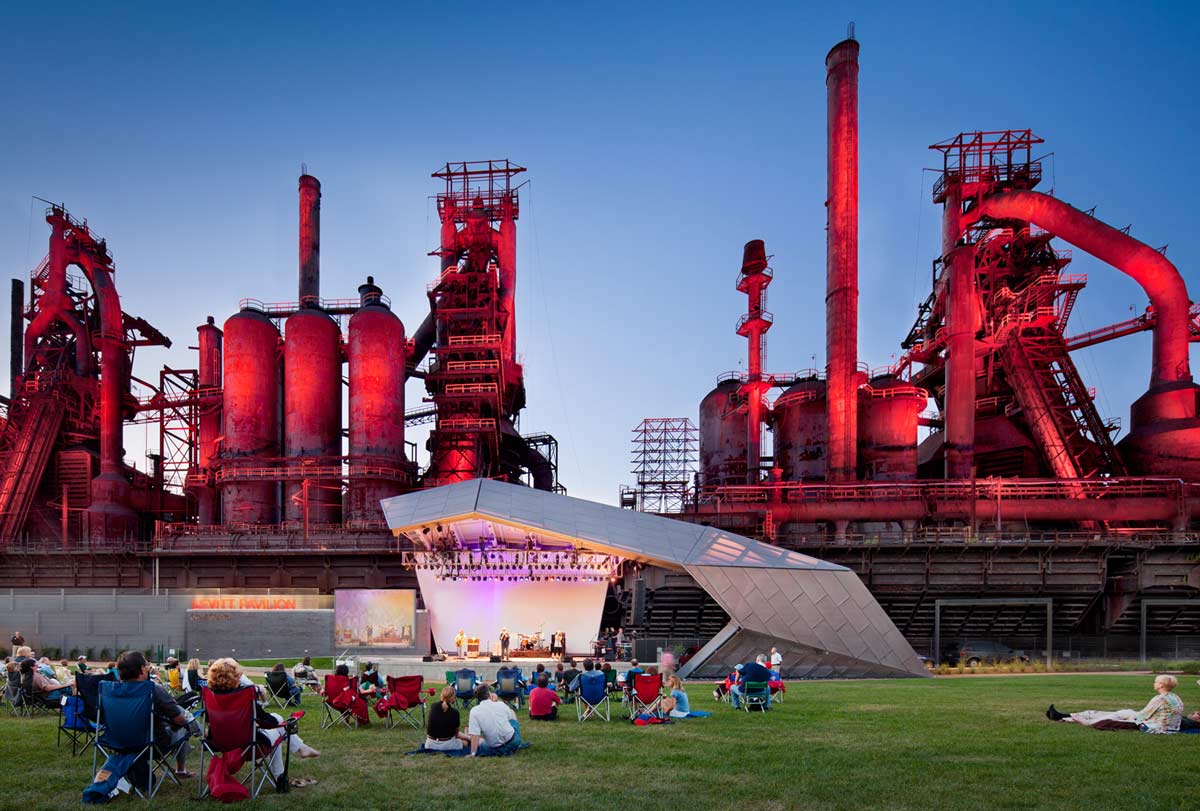
 |
 |
 |
WRT-Bethlehem SteelStacks Arts + Cultural Campus
산업 유산이 예술과 만나다. 산업 유산의 재생, 문화적 공간의 창출, 환경 지속성
서론
이 블로그 글은 Bethlehem SteelStacks Arts + Cultural Campus 프로젝트에 대해 다룹니다. 20세기 산업 강국이었던 Bethlehem Steel Corporation(베들레헴 철강 회사)이 철강 제조를 중단한 후, 이 프로젝트는 이 역사적인 장소를 새로운 문화와 예술의 중심지로 재탄생시키고자 하는 노력을 보여줍니다. 설계자 WRT는 어떻게 이 프로젝트를 통해 커뮤니티를 재결합하고 환경 지속성을 높이는 공간으로 탈바꿈시켰는지 알아보겠습니다.
본론
a. 프로젝트 개요
프로젝트 명: Bethlehem SteelStacks Arts + Cultural Campus
설계자: WRT
위치: 미국 펜실베이니아주 베들레헴(Bethlehem, Pennsylvania)
b. 설계 컨셉
핵심 개념: 이 프로젝트의 핵심 설계 개념은 역사적 유산을 보존하면서도 현대적이고 다기능적인 공공 공간을 창출하는 것입니다.
영감: 산업 유산과 지역 커뮤니티의 역사적 중요성이 디자인의 주된 영감이 되었습니다.
디자인 특징: 기존의 산업 구조물들을 보존하고 재사용 / 다양한 문화 및 예술 프로그램을 수용할 수 있는 다기능 공간 / 환경 지속성을 고려한 설계
c. 설계 컨셉의 구현
구현 방법: 프로젝트는 기존의 철강 공장 구조를 보존하면서도 새로운 기능을 추가하여 현대적이고 다기능적인 공공 공간으로 탈바꿈시켰습니다.
구현 사례:
Hoover-Mason Trestle(후버-메이슨 고가 보행로): 방문객들이 산업 고고학적 유산을 직접 체험할 수 있는 고가 보행로
Levitt Pavilion(레빗 파빌리온): 가족 친화적인 콘서트를 열 수 있는 야외 공연장
d. 주요 설계 요소
자연 통합: 기존의 불투수성 표면을 제거하고 녹지를 조성하여 자연을 통합하였습니다.
환경 지속성: 에너지 소비를 최소화하기 위한 저조도 조명, 식물 식재를 통한 생태계 복원 등 다양한 지속 가능한 설계 요소가 도입되었습니다.
사회적 영향: 커뮤니티를 위한 공공 공간 제공, 지역 경제 활성화 기여
e. 내부 및 외부 디자인
내부 공간: PBS39와 ArtsQuest와 같은 비영리 단체들이 공공 프로그램을 확장할 수 있는 공간을 제공합니다.
외부 공간: 피크닉 및 놀이 공간, 공공 예술 설치물 등 다양한 외부 공간이 마련되어 있습니다.
재료의 적용: 산업 유산을 반영한 재료 사용으로 역사적 맥락을 유지
f. 글로벌 건축 트렌드와 비교 분석
글로벌 트렌드: 이 프로젝트는 포스트 인더스트리얼 도시의 재생 모델로, Rust Belt(러스트 벨트) 지역의 많은 도시들이 유사한 접근 방식을 채택하고 있습니다.
특징 비교: 글로벌 트렌드와 비교할 때, Bethlehem SteelStacks 프로젝트는 역사적 유산의 보존과 현대적 재생의 균형을 잘 맞춘 사례로 평가받고 있습니다.
환경 지속성 트렌드: 지속 가능한 설계와 커뮤니티 재생이 글로벌 건축 트렌드와 일치합니다.
g. 인사이트
전문가 의견: WRT의 혁신적인 접근 방식은 단순한 공간 재생을 넘어 지역 사회의 경제적, 사회적 재생에 큰 기여를 하고 있습니다. WRT의 설계는 단순한 장소의 물리적 변화를 넘어서, 커뮤니티의 사회적, 경제적 활력을 불어넣고 있습니다. 이는 지역 주민들과 방문객들이 함께 사용할 수 있는 다목적 공간을 제공함으로써 달성되었습니다.
미래 전망: 이 프로젝트는 소규모 포스트 인더스트리얼 도시들의 재생 가능성을 보여주며, 앞으로의 건축 디자인에 지속 가능한 영향을 미칠 것입니다. 이는 지역 사회가 어떻게 그들의 유산을 보존하면서도 현대적 요구에 맞춰 재해석할 수 있는지를 보여줍니다. Bethlehem SteelStacks의 성공은 다른 도시들도 유사한 접근 방식을 통해 경제와 사회적 재생을 이룰 수 있음을 시사합니다.
결론
Bethlehem SteelStacks Arts + Cultural Campus는 산업 유산을 보존하면서도 현대적이고 다기능적인 공공 공간을 창출한 혁신적 재생 프로젝트입니다. 이 프로젝트는 환경 지속성과 커뮤니티 재생의 중요성을 강조하며, 미래 건축 디자인에 중요한 교훈과 시사점을 제공합니다. 이는 과거의 유산을 존중하면서도, 현대적 요구에 부응하는 방법을 제시합니다.
translate by ChatGPT





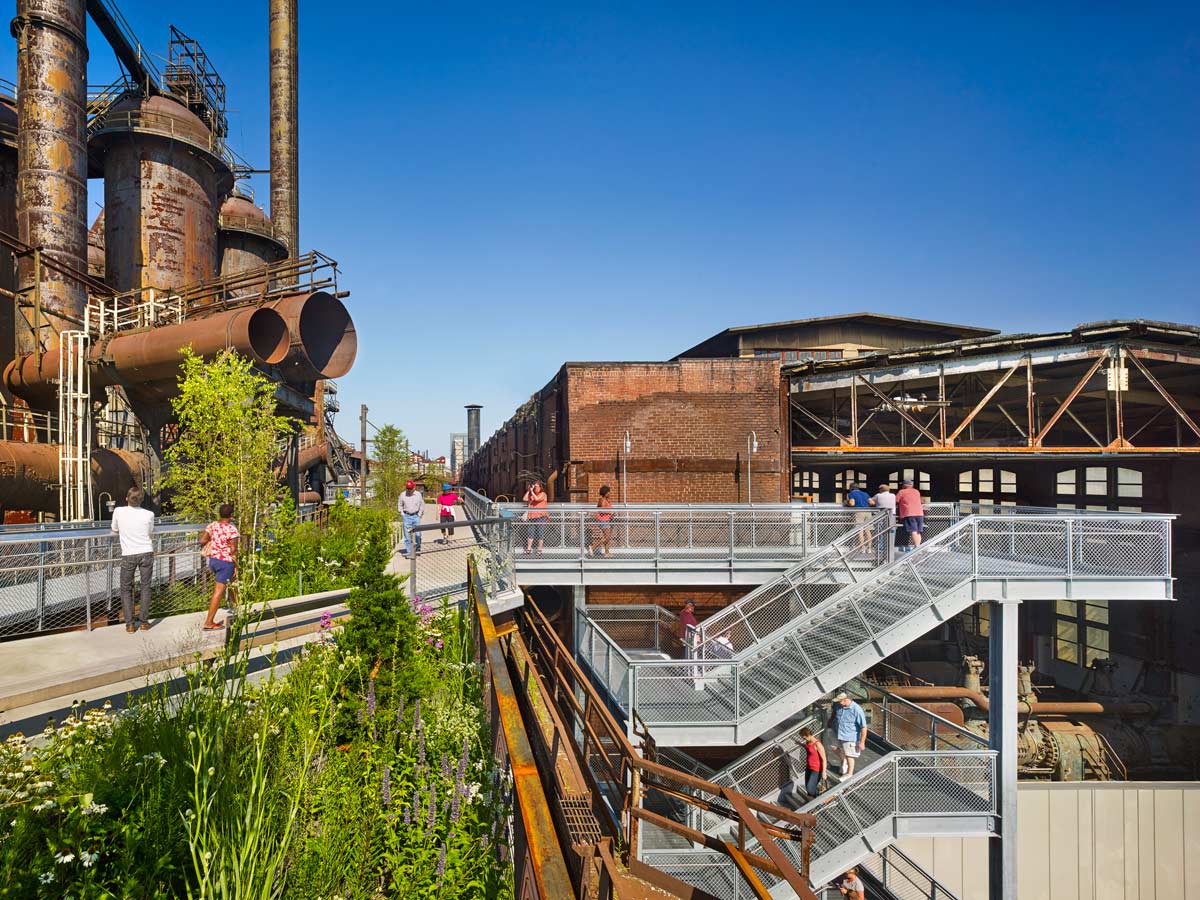




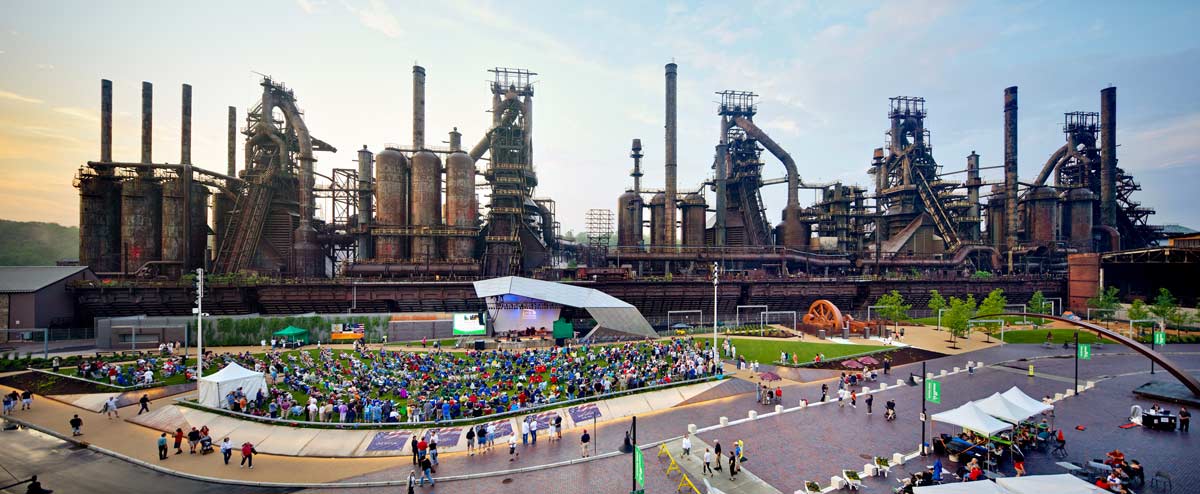
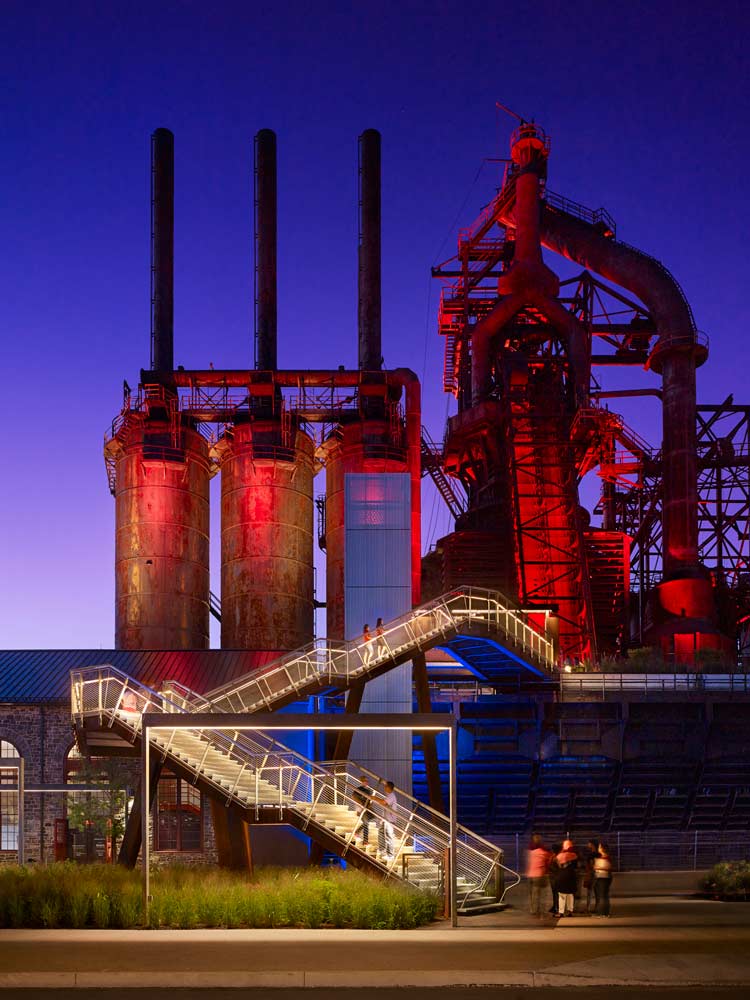


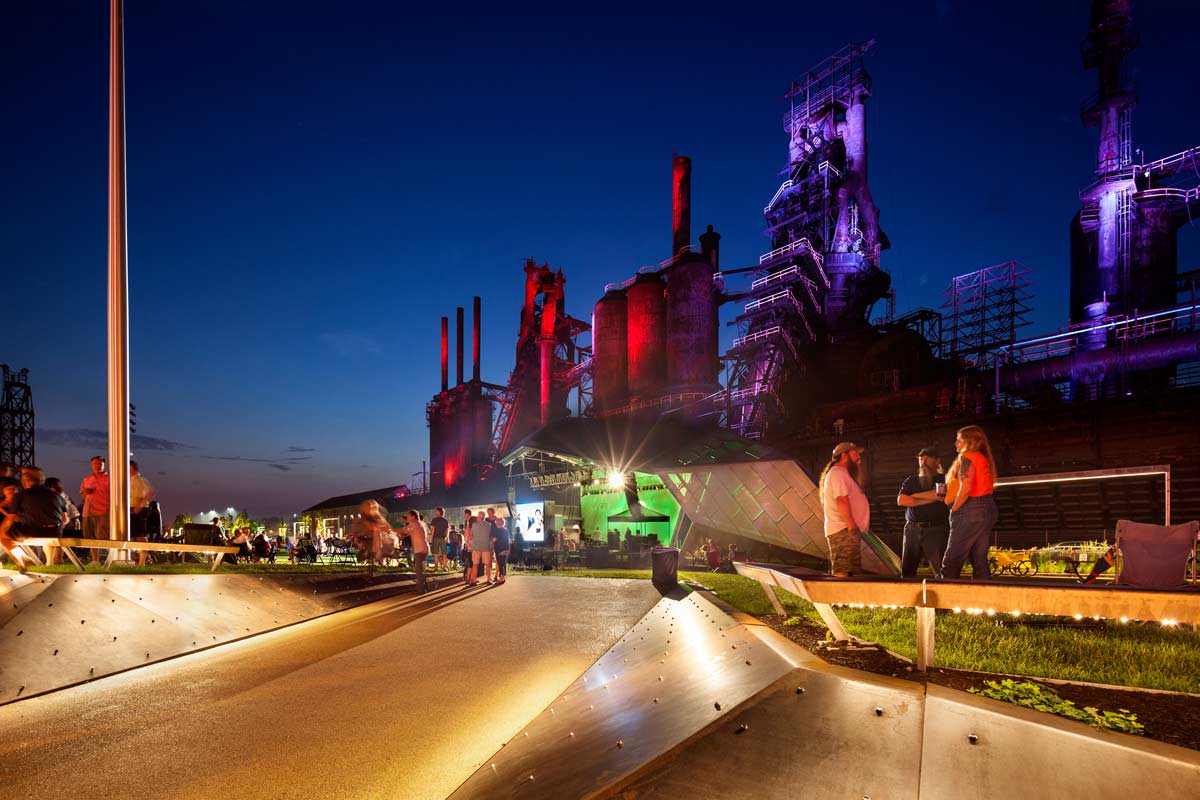











WRT: The Bethlehem Steel Corporation was a 20th century industrial powerhouse that operated facilities around the globe. It was founded in Pennsylvania’s Lehigh Valley in 1857, eventually occupying 1,800 acres along the Lehigh River. In 1995, the Bethlehem Steel Corporation stopped its steel making operations in Bethlehem, closed the plant, and brought to an end a long history that shaped the livelihoods, family life, and blue-collar culture of thousands of Lehigh Valley residents.
In an effort to revitalize the site for future uses, the Bethlehem Redevelopment Authority established Bethlehem Works, a 126-acre 20 year tax incremental finance district in 2000. Over the past 10 years, the Authority oversaw the development of new industrial parks and intermodal transportation facilities on large sites at the eastern end of the former plant, and the 9.5 acre SteelStacks Arts + Cultural Campus now occupies the western end, nestled against the city’s well-established South Side neighborhood.
The site offered many environmental challenges, due to the presence of soils that could not be disturbed or penetrated, except in isolated cases. Large areas of existing building foundations were removed, exchanging impervious cover for pervious, and minimizing the generation of stormwater runoff. Plantings were brought to the site where none existed beforehand, increasing the site’s biomass, and a low level of illumination was accepted as a way to minimize energy consumption. Socially, the project has engaged the local community, offering a “town green” for future uses that will bring new urban life to the heart of Bethlehem in support of regional development initiatives. The project’s success is contributing to the sustainability of the campus’s tenants, spurring private development in abandoned buildings and sites adjacent to the campus, while also bolstering existing businesses in the surrounding neighborhood.
The design brings a tremendous positive impact to the site, most importantly revitalizing an abandoned site in a way that both educates and creates a sense of community for both local inhabitants and visitors. The campus serves as a forecourt for the Bethlehem Visitor Center, and has enabled its nonprofit partners (PBS39, the Lehigh Valley’s public television studio; and ArtsQuest – an institution providing year round art education and performances) to expand their public programs, which has strengthened these organizations. They now work with newly established campus nonprofits (including Friends of Levitt Pavilion SteelStacks, and Penn State Master Gardeners) and Discover Lehigh Valley to provide landscape maintenance, funding, and support services to visitors. Their combined success, along with an ongoing commitment from the city, ensures that this redevelopment project is not only innovative but also sustainable in terms of its environmental impact.
While the campus is a unifying landscape, discrete areas were conceived to facilitate a diverse, flexible, and active range of programs (as of 2016, over 1.5-million visitors participate in campus events each year), including:
• An entry court facing the Visitor Center for gathering and site orientation
• A “flex” event space adjoining the ArtsQuest building for smaller performances, outdoor dining, and overflow event space for indoor/outdoor events
• A reading and theater space facing PBS 39 for outdoor programs
• The integration of public art to engage the community and site, funded by the National Endowment of the Arts
• A family picnic and play area facing a section of the Blower House
• The Hoover Mason Trestle, an elevated pedestrian promenade which allows visitors to walk through the industrial archeology of the site along the same path that the raw materials to produce steel were delivered
• Interpretive signage and wayfinding devices throughout the project, including an interactive digital application to deliver audio tours, oral histories, and a database of historical images and interpretive data [hoovermason.com]
• The Levitt Pavilion amphitheater as the campus centerpiece, which organizes 50 free family-friendly concerts each summer, and also functions as a community playfield during non-events
By re forging a cultural link between historic downtown Bethlehem, the Lehigh River, Lehigh University, and the manufacturing heritage of the Lehigh Valley, the SteelStacks Arts + Cultural Campus represents a new landscape typology for small, post-industrial cities, and will continue to contribute to the extensive economic resurgence of this former factory town. The Campus serves as a prime example of rediscovered economic and social value found in the authenticity of many of these Rust Belt sites, and is an infrastructural design model embraced by WRT.
from landezine